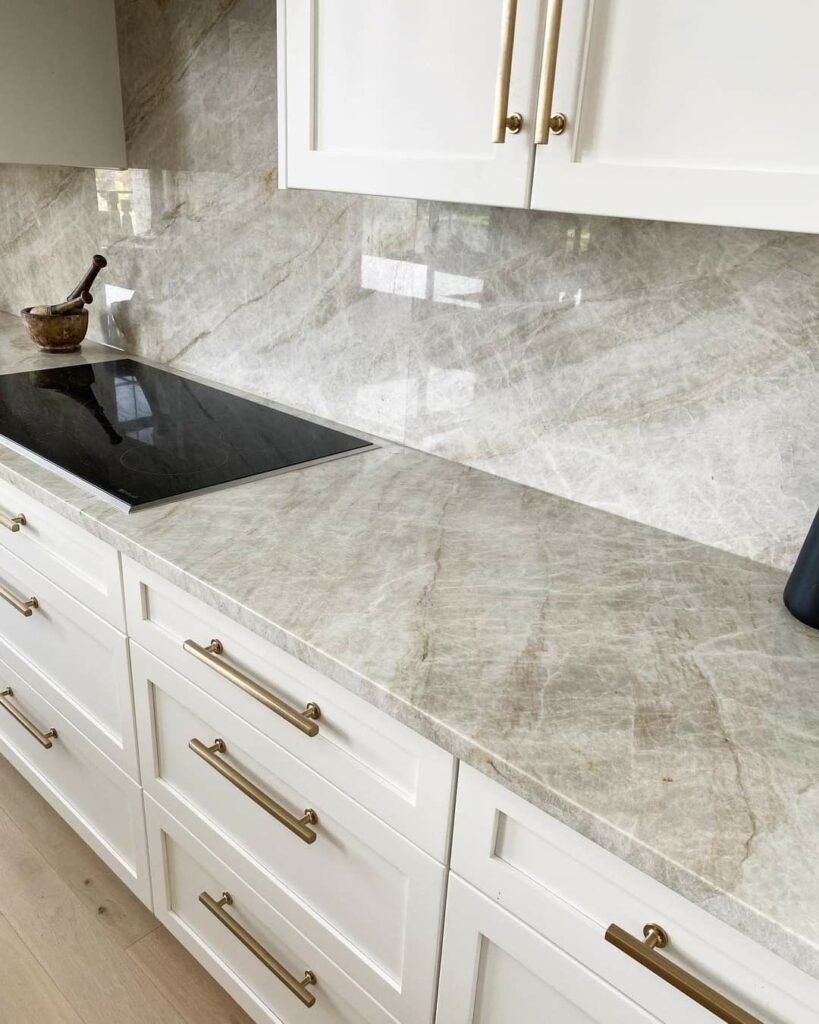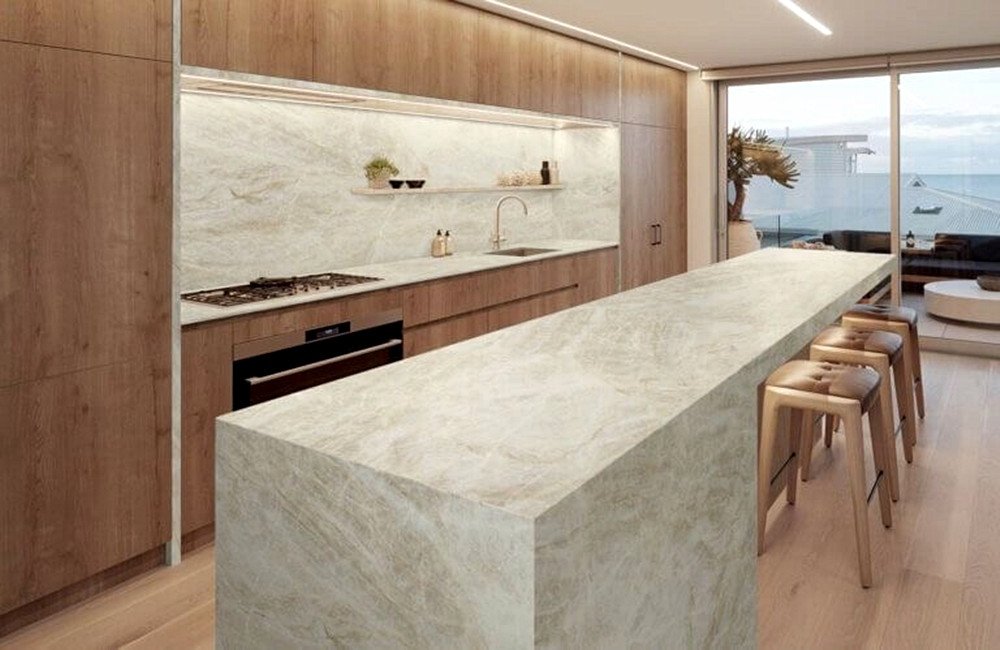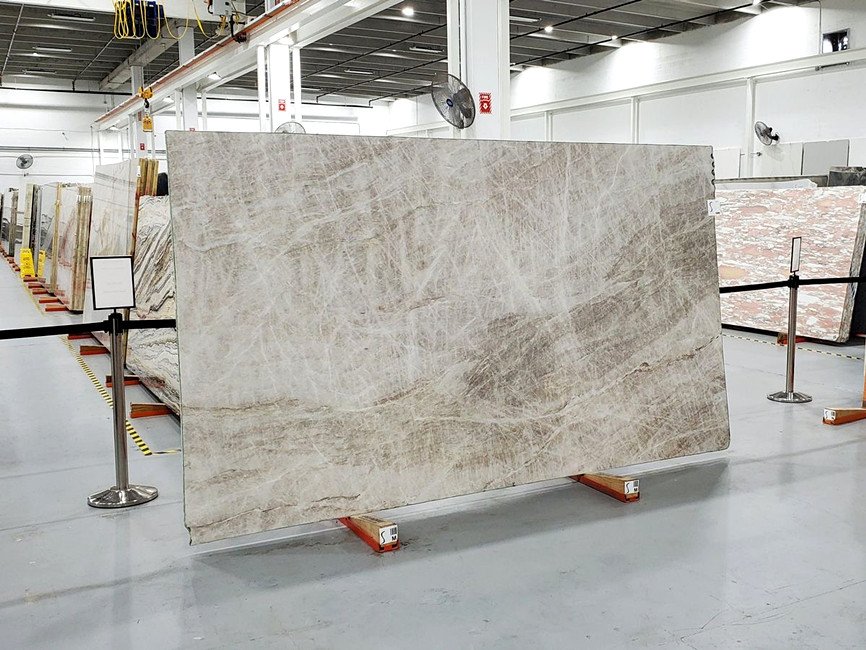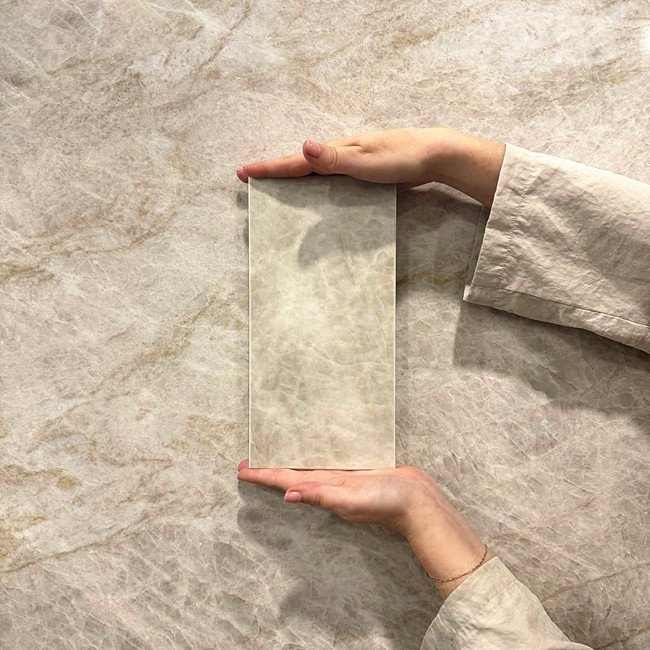In the ever-changing world of interior design, trends come and go like the seasons.
Today’s darling can easily become tomorrow’s afterthought. Yet, there are enduring classics that transcend these cycles, remaining unwavering stars in a designer’s repertoire for over a decade or more. Taj Mahal Quartzite is precisely such a star. Its entrance never requires loud fanfare, and its enduring popularity is no accident—it is the result of a long, celebrated feast for the senses, underpinned by intrinsic strength and timeless beauty.
When we first encounter Taj Mahal Quartzite, its impression might not be one of immediate, overwhelming awe. It doesn’t possess the stark visual impact of some stones; instead, it presents itself with a low-key, serene character. But like a classic novel worth rereading or a distinguished gentleman seasoned by life, its charm lies in its staying power. At first glance, it seems ordinary; with the second, you perceive the subtlety of its veins; by the third, you are utterly captivated by the tranquility and sophistication it evokes.
Its base color is a soft, warm grey or light taupe, reminiscent of the first light at the horizon at dawn. Across this canvas, elegant, faint white veins meander, sometimes like flowing clouds, other times like gentle streams, occasionally interspersed with delicate hints of gold or brown, as if brushed on by time itself. This unique coloration and patterning make it like a fine vintage wine—mellow at first taste, but revealing endless complexity on the finish. It is not ostentatious, yet it carries an innate sense of narrative, capable of infusing a space with a calm and profound soul. This is the fundamental difference between it and ordinary marble or granite—it does not seek to conquer you at first sight but invites you to pause, to feel, and to discover its enduring beauty through day-after-day coexistence.

The Hardcore Substance of a “Power Player”: When the Machine Speaks for Itself
If its aesthetic is its soft power, then its physical properties are its undeniable hardcore capital. First, a crucial concept must be clarified: Taj Mahal Quartzite is not your ordinary marble or granite; geologically, it is quartzite, a stone with even higher hardness.
This geological difference directly dictates its superior performance.
1. Exceptional Hardness & Durability: Quartzite is primarily composed of silica, giving it a Mohs hardness of around 7, whereas granite typically ranks 6-6.5, and marble only 3-5. This means Taj Mahal Quartzite is highly resistant to scratching and abrasion. For kitchen countertops, high-traffic flooring, and similar applications, it is an almost impeccable choice. Pots, pans, knives, and utensils are unlikely to leave marks on its surface.
2. Dense Structure & Low Porosity: During its formation, quartz grains are compacted under immense heat and pressure, resulting in a very dense structure for Taj Mahal Quartzite, with a porosity far lower than that of marble and granite. This yields two core advantages: superior stain resistance and very low water absorption. Spills like soy sauce, coffee, or wine are less likely to penetrate, making daily cleaning and maintenance remarkably straightforward—no need for the meticulous, anxious upkeep required for marble.
A telling anecdote widely circulated within the stone industry, which best proves its hardness, is this: Gang saws take significantly longer to cut through slabs of Taj Mahal Quartzite compared to other natural stones. The machinery is honest; it isn’t swayed by marketing slogans. The slower cutting speed is direct, irrefutable proof of its incredibly hard internal structure. This minor “inconvenience” becomes the silent yet most powerful testament to Taj Mahal Quartzite’s superior quality.

The Ultimate Design Chameleon: The Magic of Seamless Integration
In design, some materials are overly assertive; they demand that every other element in the space revolve around them, and can easily look out of place if not carefully managed. Taj Mahal Quartzite, however, is the ultimate supporting actor, a master of collaboration. It possesses a magical ability—to achieve seamless integration with almost all styles of furniture and soft furnishings.
• With Modern Minimalism: Its neutral tones and delicate veining provide the perfect canvas for creating serene, high-end minimalist spaces. Clean lines and handle-less cabinets paired with Taj Mahal Quartzite on a feature wall or island instantly make a space feel expansive and richly textured.
• With Industrial Style: When it meets exposed brick walls, cool metals, and rough concrete floors, its warm texture perfectly balances the cold, hard edges of the industrial aesthetic, injecting a touch of human warmth, creating a harmonious blend of strength and softness.
• With Wabi-Sabi: Its natural, imperfect veins align perfectly with the Wabi-Sabi philosophy that celebrates naturalness, simplicity, and the traces of time’s passage, working together to create an atmosphere of tranquility, acceptance, and a return to authenticity.
• With Classic/Traditional Styles: Whether it’s the warmth of a Country farmhouse or the refinement of French Chic, Taj Mahal Quartzite, with its classic stone attributes and elegant hue, integrates effortlessly, elevating the style of the entire space without ever appearing dated.
It is like a versatile character actor who, regardless of the style of their co-star, can create brilliant chemistry, enhancing the entire production’s design without ever stealing the scene.

Investing in Timelessness: The Value Proposition of Choosing Taj Mahal Quartzite
Choosing a finishing material, especially for core areas, is a significant investment. When you choose Taj Mahal Quartzite, you are investing not only in present beauty but also in peace of mind and value for decades to come.
• Longevity: Its exceptional hardness and durability mean it will maintain its fresh-out-of-the-box appearance even after years of use, free from the worries of scratches and wear, standing the test of time.
• Low Maintenance: The stain and liquid resistance afforded by its high density make daily care exceptionally easy, saving you from costly repairs and complicated maintenance routines down the line.
• Timeless Aesthetics: Its neutral, elegant, and layered beauty allows it to gracefully navigate the ebb and flow of trends. No matter how your soft furnishings evolve in the future, it will serve as a stable foundation, harmonizing with any changes.

Conclusion
The sustained popularity of Taj Mahal Quartzite is a comprehensive victory, achieved through a combination of inner strength and outer charm. It uses its hard body to resist the erosion of time, its enduring beauty to soothe the soul, and its inclusive character to embrace all design possibilities. It is more than just a stone; it is a silent guardian, a piece of narrative art, an eternal backdrop that will accompany you and your family, witnessing countless beautiful chapters yet to be written. When you find yourself lost among a sea of design choices, return to the essence and consider this veteran power player—Taj Mahal Quartzite. It may not offer the most thrilling first encounter, but it will surely reward you with the most enduring companionship and the most profound sense of taste.
